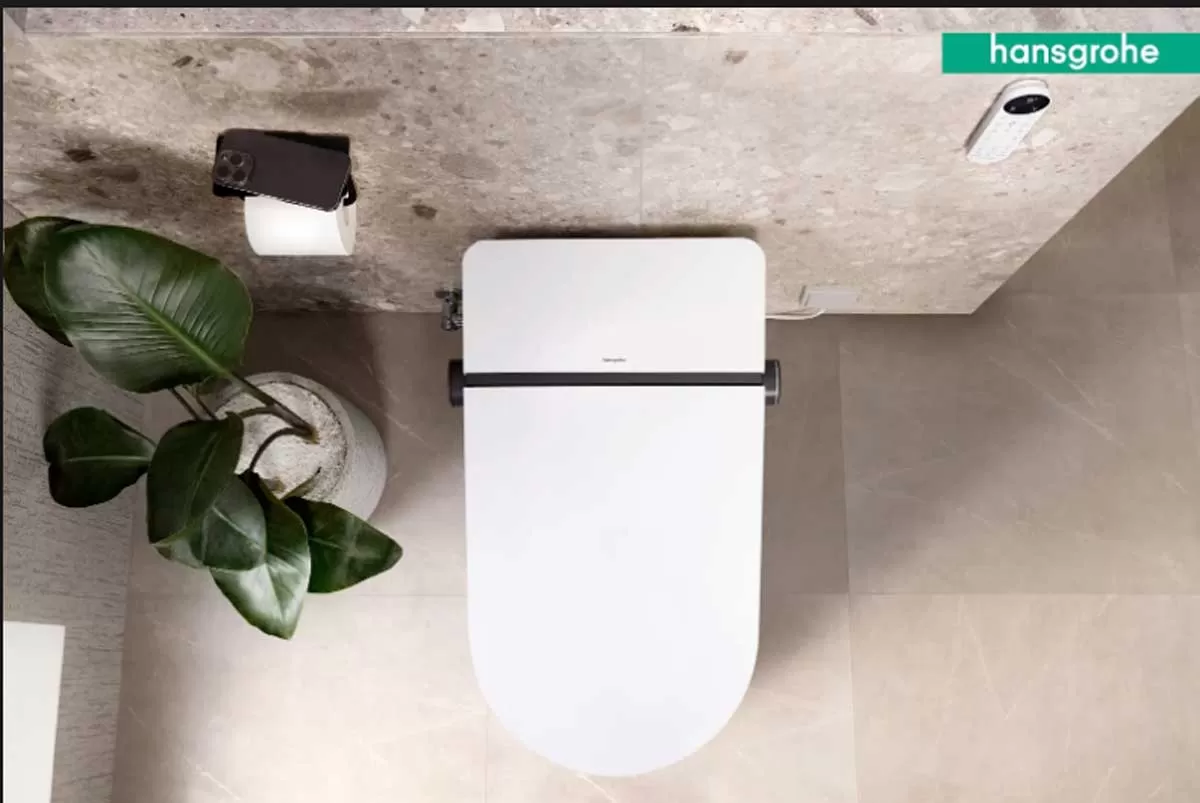With new launches setting the tone and recent announcements reviving demand in the real-estate sector, CW PROPERTY TODAY conducts a buyer survey and delves deeper to find out what exactly buyers hunt for.
India is primarily an end-user market for the real estate sector. Although demand remains largely consistent, property sales volumes fluctuate on the basis of market influencers such as project pricing, end-user affordability, and macro-economic dynamics. Different micro-markets behave differently in each city, and various factors influence the purchase decision of property buyers.
This includes pricing, project location and unit sizing as well as the season or month of purchase.
Certain positive moves over the past few months such as the passing of the Real Estate Regulatory Act (RERA), recent cuts in the home loan interest rates, among others, has once again revived hopes for buyers who were waiting to take the plunge. And now, buyer sentiments have definitely taken a leap upwards.
The market
Overall, the property market is stagnant at present, affirms Anshuman Magazine, Chairman & Managing Director, CBRE South Asia. And, Manish Sinha, Head, QuikrHomes, adds, 'As per our data, there is a 30-35 per cent increase in Q1 2016 compared to Q1 2015. The survey conducted through our platform after the passage of the Realty Bill shows that about 45 per cent respondents are looking to invest within the next six months, while another 26 per cent are considering to take the plunge within a year.'
Ashutosh Limaye, Head-Research & Real Estate Intelligence Service, JLL India, sees a definite rise in the mid-segment and affordable categories. To this, E Jayashree Kurup, Head-Content and Research, Magicbricks.com, adds, 'Considering the top 14 cities in India, consumer preference is concentrated in the budget segments.' (See box on Consumer Preference for Residential Properties.)
What's in demand?
The year 2015 was defining for the property market in India as customer expectations and market dynamics began to evolve; the most important change came about in the outlook of the home buyer. According to Magazine, 'Key words for home purchase have become project delivery, pace of construction progress and product quality. Inventory of completed and available housing units of leading cities has helped buyers make their decisions.

' Indeed, today, buyers are much more informed about legal aspects, specifications, delivery timelines and penalties.
Demand for small-sized apartments is gaining prominence, mainly owing to preference for affordable homes.'About 23 per cent prefer to invest in one-BHKs,' according to Sinha. But for Kurup, 'There is a clear tilt towards two-BHKs, which form 42 per cent of the total consumer preference; this is followed by three-BHKs at 30 per cent.' Developers too, have tried concepts such as mid-segment homes, smaller apartment sizes and lesser amenities to bring down ticket size. This helps bridge the gap between affordability and existing supply.
Land or ready-to-move-in?
Land purchase is a common investment owing to low entry barriers and costs. This applies to both luxury and affordable housing segments. As for the luxury segment, owning large land parcels is equated with extravagance, especially in prime or central locations. 'In peripheral locations, these purchases are made for a second home,' Magazine points out.
But, as per trends across leading cities, the home buyer either enters a project at the preliminary stage for price advantages or with the perception of improvement in the pace of construction. 'Typically, the price difference between product launch and final possession has shrunk,' says Magazine, adding, 'àand ready-to-move-in property has been noting more traction.' Limaye affirms that this is more pertinent to major land-starved cities such as Mumbai, Delhi or Bengaluru.

*Considering the top 14 cities in India: Delhi, Gurgaon, Noida, Greater Noida, Ghaziabad, Pune, Mumbai, Navi Mumbai, Thane, Ahmedabad, Bengaluru, Chennai, Hyderabad and Kolkata.
Source: Magicbricks.com
Interestingly, there is significant demand for plots in the South as compared to the East and West of India. (See chart on Demand for Different Property-types Region-wise.) The West has seen maximum demand for one-BHKs, and according to Sinha, 'This is primarily owing to the high demand for it in the MMR.' He adds, 'Apartments have gained immense popularity with 69 per cent of prospective buyers preferring them.'
According to Limaye, in the suburbs of Delhi, NCR, Bengaluru and Chennai, plotted developments are bought for end-use. 'However, many buyers prefer staying away from buying plots because of the inherent risks,' he adds. Nevertheless, a few prefer buying land for property construction. As Sinha shares, 'About 19 per cent of prospective buyers pan-India showed keen interest in residential plots in Q1 2016. This trend is mainly popular in southern cities of Chennai and Bengaluru; the former is a traditionally conservative market and the latter has several investors coming forward. 'Buying land is also a popular trend in Tier-II cities with aspirational values attached to independent homes. Additionally, apartment culture is yet to take off in many Tier-II and Tier-III cities.' (See table on Comparison of Different Property Types.)
Segmental trends
Demand has seen some increase owing to renewed interest by the salaried class as end-use and those who want to opt for a second home. 'End-users and first-time home buyers are driving the demand for residential property,' says Sagar Setia, Director, Mona Townships. 'In the northern region, home buyers are more pronounced in the affordable luxury segment and entry level segment. While commercial is dominated with properties that offer returns to buyers, it is seen as an alternate to fixed income. Also, IT-enabled segments have gained traction in the Tricity region, with players setting up their regional base. Support services for IT and ITES and the vibrant atmosphere for startups has increased demand in Tricity.'
The demand for affordable housing is set to witness exponential growth in the West. Informed home buyers approach the process with defined requirements. 'Home buyers in a city like Mumbai are sensitive to ticket price, followed by location, connectivity and amenities,' says Smeeta Neogi, Vice President-Marketing, Mahindra Lifespaces. Equally important is the brand value and developer's track record, she adds. Interestingly, branded luxury housing, affordable luxury and second homes are fast gaining prominence with greater awareness, disposable incomes and lifestyle aspirations, says a Tata Housing spokesperson, adding, 'Urban customers demand innovative offerings that are sustainable, both from an investment standpoint and in terms of lifestyle.'
In the East, residential buyers are end-users who buy houses developed by reputed, organised builders for long-term use, shares Harshavardhan Neotia, Chairman, Ambuja Neotia Group.
In commercial, he says, for 'A' class offices, the eastern zone still offers the most competitive price. Hence, customers look for a cost-effective model for commercial realty. In the hospitality sector, a substantial number of five-star hotels are being added. In the retail segment too, customers are increasingly becoming more interested in luxury brands. While Neotia notes that the region has always been a good hub for financial firms, he says, 'Apart from the price advantage, the IT, ITes and related companies are attracted by the large pool of trained manpower available here.'
However, the East is perceived to be less business-oriented. As Neotia says, 'This perception, though exaggerated, is reflected in the rental business. In the residential division, people haven't been exposed to new products; hence selling a high-value product gets challenging. The only strategy to customer delivery is the time-tested one: Not compromising on the product and maintaining utmost transparency in dealing with customers.'
Residential, the driving force
Demand in the residential segment has always been strong. Consumers trust a developer based on reputation and track record, and when product offerings match requirements.
(See CW PROPERTY TODAY survey on Buyer Preference on Page 106.) While all residential segments are likely to grow, data suggests a slight decline in the number of ready-to-move-in properties in the affordable segment in Q1 2016, compared to the corresponding quarter in 2015. 'Hyderabad has seen a decent rise in supply in the luxury and ultra luxury categories,' shares Sinha. For 14 cities in India (see table), over one-fourth of the consumer preference for residential properties is in the narrow price segment of Rs 20 lakh to Rs 40 lakh. And, 'in the bigger cities where land and property prices are high, this is the most under-supplied segment,' shares Kurup.
India is primarily a service economy (55 per cent of GDP comprises of services). However, despite constant rise in incomes, offering high-end projects at a time when customers should first be accustomed to mid-segment projects is incorrect, shares Limaye, adding, 'Developers must consider that today's mid-segment buyers could be tomorrow's high-end home buyers, but the shift will be gradual.' But Magazine is certain that the affordable segment will be the driving force.
Is price the deciding factor?
Price has a role to play with project size and location across most realty asset classes, says Magazine. And, as per QuikrHomes consumer survey for H1-2016, most buyers preferred property within the budget of Rs 40-70 lakh.
For a home buyer, price and location are important considerations. 'There is demand for competitively priced projects for middle-income buyers,' shares Limaye. 'Here again,' reveals Kurup, 'consumers look at price in rupee lakh and not rupee per sq ft. It also becomes important to understand if prices will improve after the property is bought.'
Upping the sentiment
One challenge has been constant: Lack of single-window approvals. 'Swift action can enable more efficient use of capital and facilitate timely delivery of homes,' says Neogi.
But buyers today have matured and look for all amenities for modern living within their budget. As Setia says, 'We strive to give a seamlessly pleasant experience to customers.
The right quality at the right price with timely delivery is our mantra.'
The rate cut by RBI and passing of the Real-Estate Bill has increased confidence among home buyers. 'Also, tax sops for first-time buyers and incentives on development of affordable housing announced in the Budget are expected to spur market growth,' believes Neogi. Besides, a number of housing schemes and lucrative festive offers are prevailing in the market, 'which create an opportunity for buyers to invest,' believes Dr Anil Kumar Sharma, Chairman and Managing Director, Amrapali Group.
'We have been suggesting a change of product offering. There is good demand for apartments priced from Rs 65 lakh to Rs 1 crore in major cities, while smaller cities should focus on ticket size less than Rs 65 lakh,ö says Limaye.
The economic situation is more or less stable owing to reasonably good employment generation, controlled inflation, and a falling interest rate regime. So, the market condition is conducive. However, developers should ensure timely completion to keep the momentum of trust going strong. On the part of the government, faster approvals will go a long way in reducing project financing-related inefficiencies, bringing down construction cost. All this will work in good faith for a buyer, who ultimately rules the sector.
What do buyers ask?
E Jayashree Kurup, Head-Content and Research, Magicbricks.com, shares information on the type of questions Magicbricks.com receives:
Project-related information:
About new projects on our website and projects they are interested to buy. Queries related to project details, prices, location and approvals.
Advice on benchmarking different projects shortlisted on various parameters.
How to choose a builder or project at a particular location?
Legal and taxation: Consumer queries on documentation required while undertaking a transaction or related to land or residential plots.
Approvals for projects as well as individuals while constructing a house.
Queries related to taxation, rebates, property transfer, inheritance, etc. Investment:
Locations, projects and cities where they can invest and earn maximum returns.
Price trends of locations and projects as well short to long-term return potential.
BUYERS' CHOICE SURVEY
A detailed insight into the buyers' mind and decision-making patterns facilitate a builder in determining the nature of projects to be delivered to a target audience. And, to offer a comprehensive insight into property buyers' preferences, CW PROPERTY TODAY once again conducted the 'What Buyers Want' survey this year. The survey including major segments in the sector- Residential, Commercial, IT and Hospitality - recorded a total of 100 respondents comprising realtors from India's Tier-I and Tier-II cities.
Main parameters such as price, goodwill of the builder, green features, etc, which predominantly lead to property purchases, have been listed and divided into segments. With Budget 2016 giving a massive push to the affordable housing supply, this section that was added just last year in the residential segment as part of the survey, continues to be there this year as well. Location preferences and proximity to social infrastructure have also been noted. Also, a new addition this year has been the smart building feature, which is gaining prominence in the residential, commercial and IT segments. And, while there is a growing market for facility management, this category has been extended beyond the hospitality segment and to commercial and IT as well. All these parameters have been further rated by realtors on a scale of 1-5, with 1 being highly important.
The following tables depict the current trends and preference in the real-estate market.
North: IT-enabled segments have gained traction.
South: Significant demand for plots as compared to the East and West.
East: Most competitive price for 'A' class offices; number of five-star hotels being added.
West: Demand for innovative offerings, sustainable for investment and lifestyle.
- Seraphina D'souza




















